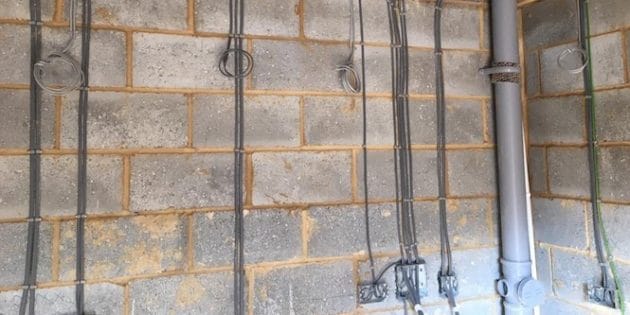
Installation of Indoor and Outdoor Power Sockets
While there are extension cables and adapters available, there are times when an additional power socket is necessary for your home.
With many of us using more and more devices, you may find that you need to increase the number of power sockets in certain rooms of your home or you need an outdoor socket.
This work should be left strictly in the hands of a professional, but here we’ll explore what you can expect with this type of project.
The Importance of Safety
Although you may have developed some significant DIY skills, it is vital to recognise the importance of safety when installing new power sockets.
All electrical products are mandated to be installed in accordance with Building Regulations for your safety. For this reason, you should consult a competent electrician who is registered with an appropriate self certification scheme, such as NICEIC or NAPIT.
You should never take any risks with electrical safety, an electrician will need to switch off the main power, so it is a good idea to locate your fuse box or consumer unit before your appointment to save time.
It may be possible to switch off the appropriate breaker, and your electrician will use a socket tester to check that the circuit is dead before they begin work.
Adding a Spur to a Ring Circuit
The most common way to install a new power socket is to run a spur cable from an existing socket to connect it to the ring circuit. Unfortunately, this is not always possible.
The IEE Wiring Regulations insist that a spur should not be run from a socket already on a spur, or already supplying a spur.
Additionally, the new socket should not extend the area currently served by the circuit beyond 100 square metres.
If it is possible to run a spur from an existing socket, your electrician will need to assess the restrictions on each main circuit.
A 30/32 amp circuit can supply a maximum 100 square metre area, but since certain rooms, such as kitchens are often heavily loaded, you should avoid using sockets in these rooms to create the spur.
Your electrician will need to calculate the floor area of the circuit and ensure that it complies with regulations.
The process of running the spur involves running 2.5 millimetre cable from the new power socket to an existing socket. Your electrician will need to feed the cables through the mounting box of both sockets and if you’re using metal faceplates, install a short earth core cable.
If this is not possible, your electrician may need to add a spur from your junction box.
This involves connecting cable to the main circuit cable, which can be more disruptive as your electrician will need access to several areas of your home.
Consider Energy Saving Options
Finally, you may wish to consider energy saving options. There are intelligent multi socket adaptors available with one “master” and additional “slave” sockets.
This type of adapter detects the master socket is off and switches off the additional slave sockets automatically, saving energy. Our recommended electricians would be happy to explain these types of energy saving options to ensure it is the right choice for your home.
If you’d like to speak to them about that you can find our recommended electrician nearest to you here.
Need New Power Sockets Installed?
Popular Local Electricians
Need New Power Sockets Installed?
Recent Reviews About The Electricians
Overall Rating:
Based on 1458 reviews
Great job, quick and efficient, came in looked at the job and gave a quote and did it on the spot. I know who to call in the future.
Georgie Wilson
Sent request for call back x half an hour later x call back x and to my amazement booked me in the next day x my mum was over the moon xx excellent service from start to finish x highly recommend x 5 * service
Sandra Pillibg
ARRIVED AS PER SUGGESTED TIME AND DATE. DISCUUSSED REQUIREMENTS AND SUGESTED POSSIBLE ALTERNATIVES, IS TO CONFIRM IN EARLY COURSE. FOLLOWING SHORT BREAK WHICH HAD PREVIOUSLY BEEN ARRANGED.. THANK YOU.
Albert Routledge
I'm very pleased with the work carried out I've had 3 other electricians who said they would do the job but not come back even though I rang them several times would like to say thank you once again.
Monica
Really friendly great job and reasonably priced
Caroline Rajek
Prompt service, polite & efficient contractor
Bob Marchant
Very good job
Nigel
Excellent service.
Emmanuel
Good work, speedily and well done.
Davies
My Trusted Expert Guarantee
Experts Have Been Vetted & Approved